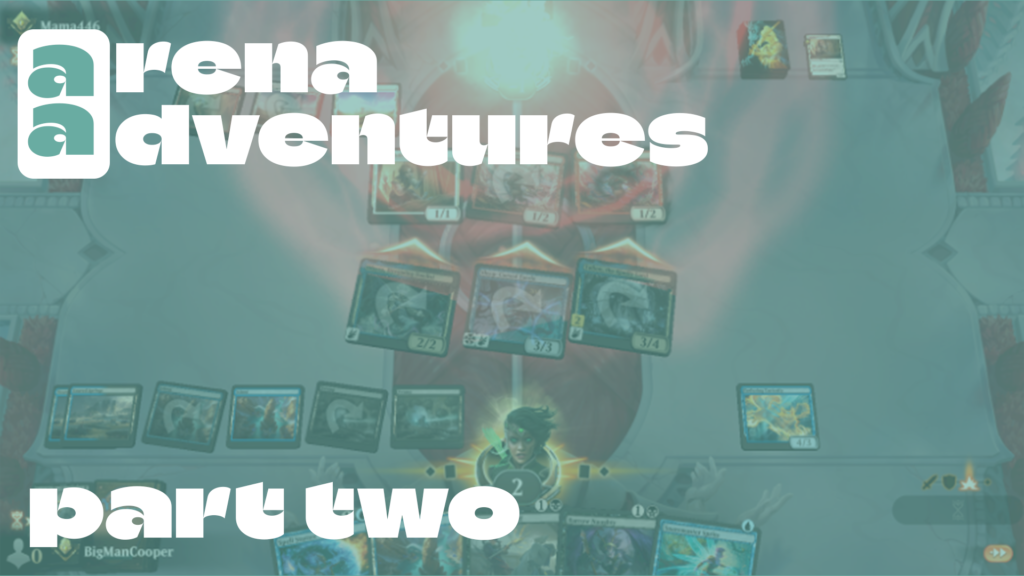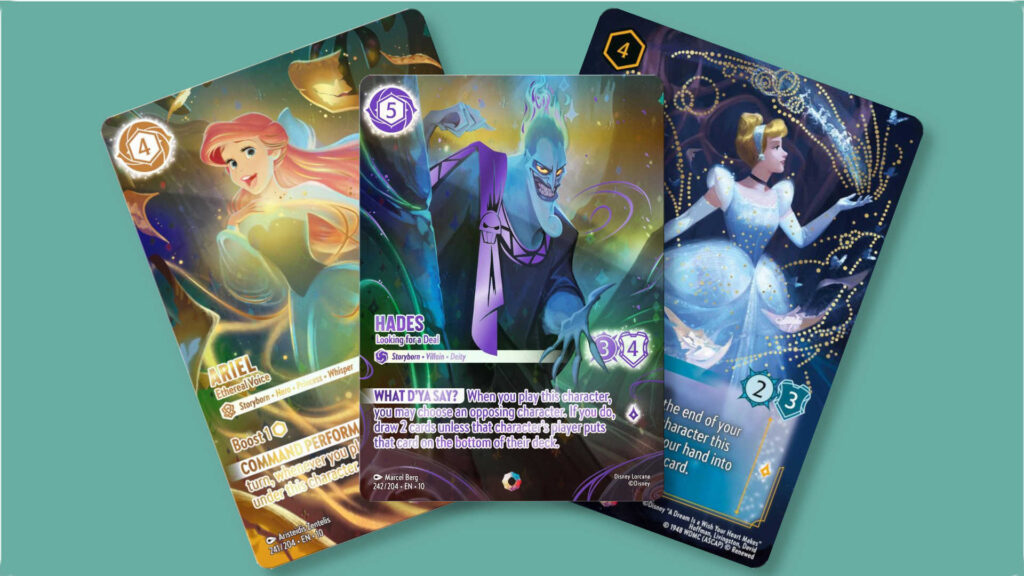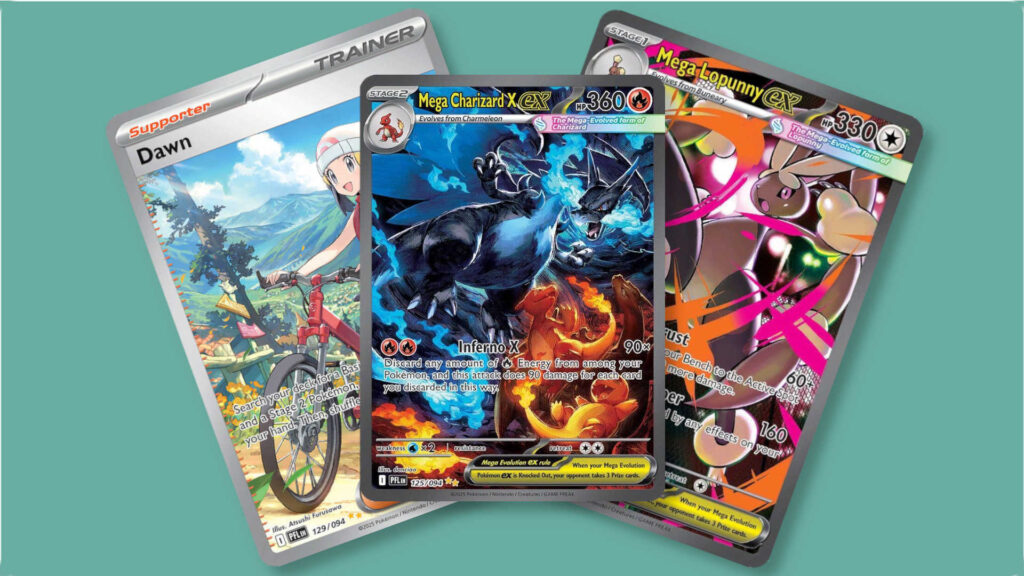Table of Contents
ToggleLearning to Fly
Hello and welcome back to Arena Adventures, the series where I climb up the Arena ladder and take you along with me. Since Part One of this series was published, two major things have happened: there was a rank reset, which sadly erased a good portion of the progress I’d made since last time. I have since climbed back up to Gold 4, which is where we’ll be beginning this week’s story.
All of you who read Part One voted on which deck I should keep climbing the ladder with. Thanks so much to everyone who voted! After looking at the results of the poll, I’ll be running with the Dimir Faeries deck (AKA Faerie Pranks). Although the Simic Ramp deck (AKA Desert Oasis) was certainly interesting, I can understand the appeal of a blue-black control deck. I can also understand the appeal of a typal deck over a generic “big mana” deck. Also, a Dimir deck that ran a lot of interaction just won the Standard world championship. After all that, it’s no wonder that the Faeries deck was more popular.
With all that said, let’s get going.
Cuts and Butts
Here’s the initial deck list.
Although this deck did get me to Gold 4, it certainly has some pretty bad cards. Let’s break them down and talk about why they don’t gel with the strategy.
Deduce seems on its surface like it would be good. It’s a blue instant that cantrips – a formula as old as time. But it’s got some problems. First and foremost, it costs two mana. All of the best, more highly played cantrips cost one. Even though there aren’t many one-mana cantrips available in Standard, a two-mana spell just isn’t good enough to cut it as generic card-draw in a grindy control deck. In a Fairie typal deck that doesn’t care much about artifacts, making a Clue just won’t cut it. So, we’ll be cutting both copies of Deduce from our deck.
I’m also getting rid of one copy of Sleight of Hand, with similar logic as with Deduce. While Sleight of Hand does cost one mana, it also has notable drawbacks. It’s a sorcery, which makes sequencing plays much harder. Plus, it doesn’t let you keep both cards you look at as options, forcing you to place one at the bottom of your deck. While it’s good to smooth out draws when cast on turn one, it’s mediocre outside of that.
Drag the Canal is another cut, because the card doesn’t really contribute anything to our deck. It makes a 2/2, sometimes gains us a little bit of life, and sometimes allows for more card selection. But the creature it makes isn’t a Faerie, we don’t really care about the life gain, and we’d prefer card draw to card selection. This card does a lot, but fails to do any of it well. I’ll also get rid of both copies of Spellscorn Coven, which either kind of counters a spell for too much mana or acts as an over-costed flying creature. Again, this card is trying to do too much and failing to do anything well.
Finally, we’ll also be cutting Freeze in Place and Faerie Dreamthief. Both of these cards do contribute to the way we want to win games (control opponent’s threats and chip away at their life totals with flying creatures), but neither of them are particularly good. We’d rather have more counterspells and better creatures in place of these.
Additions
Now, onto the fun part: what I’m adding to the list.
This list already had two copies of Spell Stutter, which I think is one of the strongest cards in our deck. It’s often a two-mana unconditional counterspell later in the game, and a copy of Mana Leak if we can land an early Faerie. So we’re adding two more copies to get a full playset.
We’re adding two more copies of another Faerie-themed card, Faerie Fencing. This spell, much like Spell Stutter, punches way above its weight class. It frequently acts like a one-mana kill spell, and can even take out Standard’s largest threats. We’ll also be running a playset of this for the foreseeable future.
I’m also throwing in another copy of Three Steps Ahead, because I’m a huge fan of modal spells. This card can copy our best creature, give us card advantage, and/or unconditionally counter a spell. It’s very good in a lot of common game states, so I’m getting one more copy. Shoot the Sheriff is the latest in a long line of two-mana almost-unconditional removal spells. The card is great, and can handle a lot of the removal that Faerie Fencing can’t handle efficiently.
Lastly, we’re adding two copies of a new card, Enduring Curiosity from Duskmourn! This card is great. It can be flashed in as a relatively big blocker, or (more importantly and more relevantly) provide a ton of card draw. Given that our Faerie-typal list runs a lot of hard-to-block flyers, Enduring Curiosity finds an easy slot here.
Here’s some more details on my current decklist:
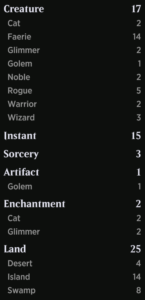
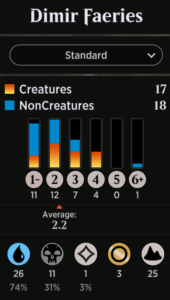
And our updated list:
This Is My Step-Ladder. I Never Knew My Real Ladder.
Alright, with all of that out of the way, and after some playtesting that brought me to Gold 3, let’s play some games and climb the ranked ladder!
One notable match was against a mono-black poison deck, where I narrowly escaped getting infected to death. I managed to survive having eight poison counters, but it was certainly a close game. I played against a few spell slinging decks, too, most of which were in some combination of Jeskai (red, white, and blue) colors. I also ran into a LOT of Gruul (green + red) aggressive decks, likely because of some recent online popularity the deck found. After seven matches, I found myself up a sub-rank to Gold 2.
At this point, I had a better idea of the deck’s play patterns. The deck functions best when it holds up mana for removal or a counterspell, but can also flash in a beater in its place. For example, it feels great to pass the turn after playing a second land with an Obyra, Dreaming Duelist and a Spell Stutter in hand. If my opponent plays a spell that’s worth countering, great! If they don’t, I can still flash in a 2/2 flyer. The same principle applies later in the game, when I can hold up mana for a bigger Faerie Fencing as removal, but also cast a Quick Study or Enduring Curiosity if that’s not needed.
Moving through Gold 2, I wanted to show what a “good” board state looks like with this deck. I captured this screenshot just as I landed a win, and if you look at my board it’s obvious why. I have enough mana to cast the control spells that are left in my hand, two solid pieces of card advantage on the board, and a few creatures that are hard for my opponent to block.
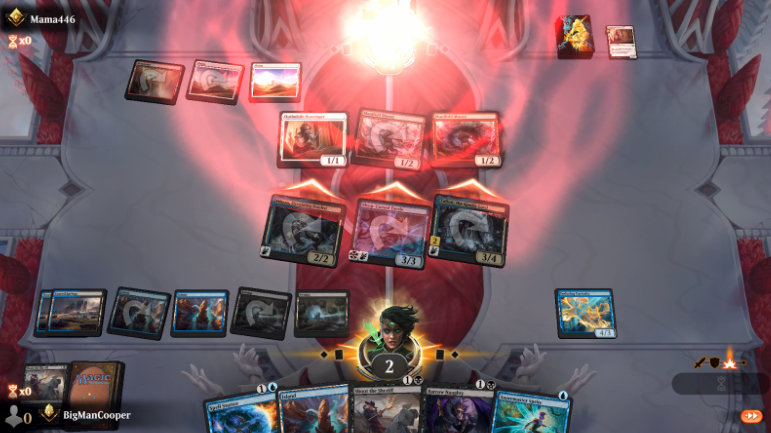
After some wins over Gruul Aggro decks and a (surprisingly high) number of mono-black discard decks, I was in Gold 1! It seems like, at least in this point of the ranked ladder, people really enjoy not letting their opponents have cards to play.
With one final push, I was out of Gold and into Platinum! To be quite honest, I got lucky here. A lot of people that I played against either conceded before turn one, mulliganed down to four cards, or just didn’t draw any of their good cards.
The Gold landscape was filled with red-based aggro decks, black-based discard decks, and a lot of “fun” multicolored decks with unique themes. Overall, while the competition was a bit harder than before, the upgraded Dimir Faeries list had no major problems cruising to the next rank.
Odds and Ends
We hit another milestone this week, reaching Plat 4. While the deck has improved significantly, I have a lot of cards I’d like to replace soon. We’ll talk about more cuts and additions in the next article.
According to some research and my previous experience with Arena, it starts to get a lot harder to climb the ranks starting at Platinum. So, after I rank up one more time, instead of “going forward” by two ranked ladder points each win and “going backwards” one ranked letter step with each loss, I’ll only “gain” one step with each win. So, from here on out, we’ll be tracking our record and hopefully climbing even higher!
Ready for more Arena Adventures? Click here for Part Three. For more great Magic content, check out the rest of our site.

